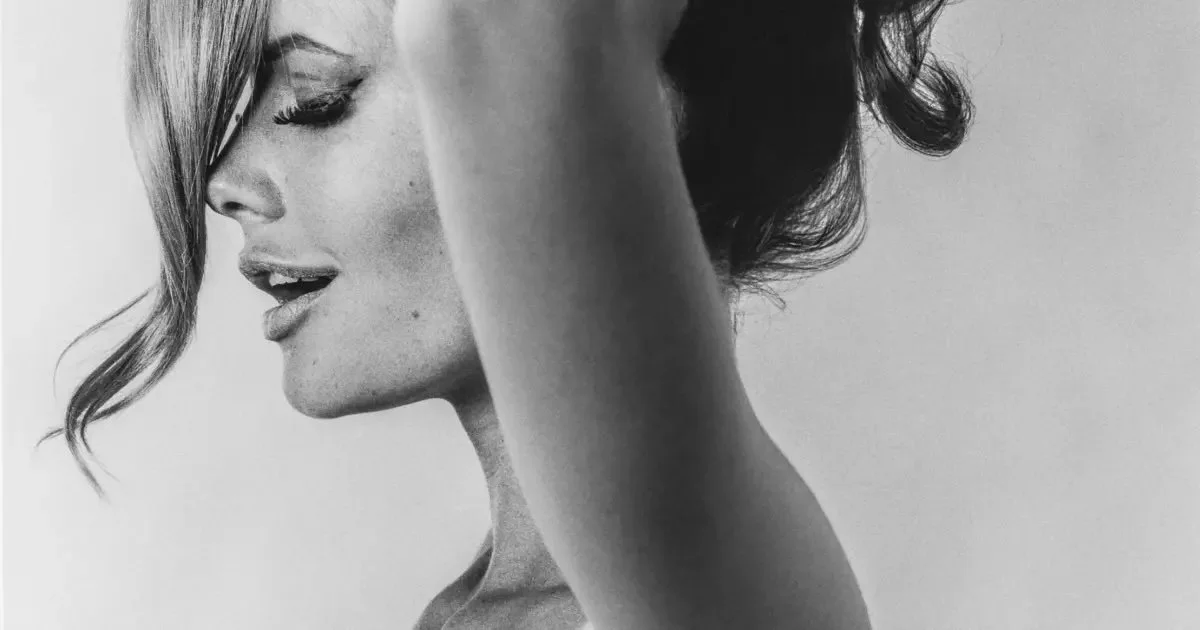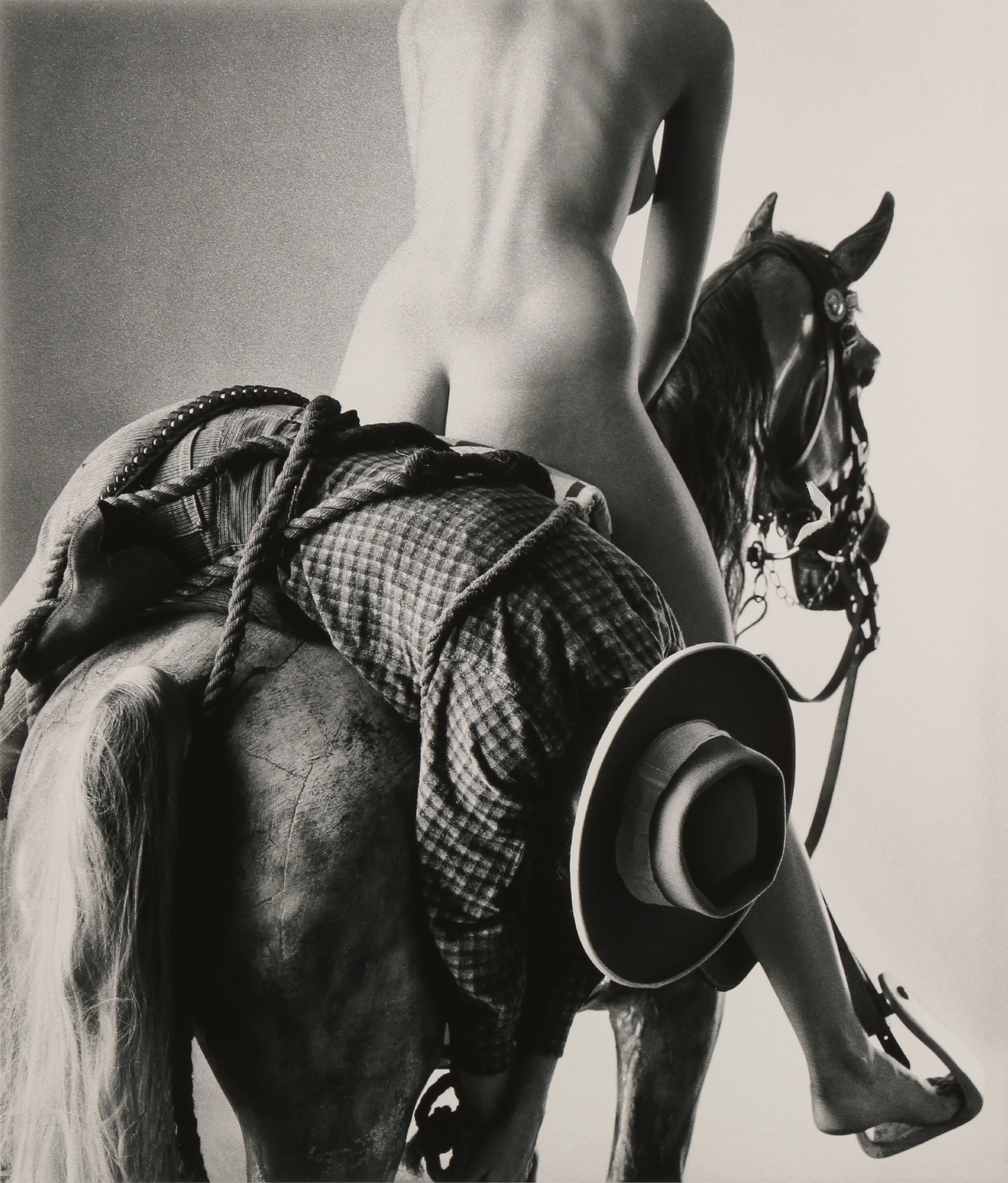
Sam Haskins: The Cinematic Alchemist of Flesh and Shadow
Sam Haskins Girl with Curl, 1980
Images Courtesy of The Photographers Gallery
From Cowboy Kate to his revolutionary ’60s work, Haskins transformed fashion photography into a sensuous narrative, capturing women as both myth and muse in a boldly cinematic light.
Killer Tied to Kate's Horse from "Cowboy Kate", 1963
November Girl with Postcards, 1966
We may not all know the name Sam Haskins, but chances are you’ve seen Cowboy Kate — that striking, high-contrast image of a woman who seems to stride straight out of a smoky Western noir, part myth, part icon. His photographs have seeped into the visual culture, influencing fashion, film, and photography long beyond their original context.
Sam Haskins was no tame society snapper. Cowboy Kate? That’s not just a photo book—it’s a neon-lit hallucination of the American psyche, half-dream, half-sin, and pure cinematic chaos trapped in silver halide. A slick visual smack to the face of the clean-cut, sanitized fashion industry, a bold middle finger to the uptight art critics who preferred their women demure and their lines straight. Haskins made women roar, made them strut like apocalyptic rock stars in a post-apocalyptic world where style was a weapon and every frame was loaded.
It’s not enough to say he was a master of the nude or a chronicler of women’s grace; that’s reductive. Haskins was a wild conjurer of mood, a slick magician who fused the sharp angles of graphic design with the softness of flesh and the raw narrative thrust of cinema.
Between 1961 and 1966, Haskins produced work that was nothing short of revolutionary. His photographs from this period are an intoxicating mix of stark sensuality, narrative invention, and formal daring. Whether it’s the domestic intimacy of quiet moments, the erotic charge of bold compositions, or the poetic play of light and shadow, Haskins’ images from these years command attention and defy easy categorization.
He was never content with simply documenting beauty. He invented it—on his own terms. His photographs pulsate with a jazz-like rhythm, a cool swagger that makes you want to snap your fingers and get lost in the mood. His work celebrates women not as passive subjects, but as stars of their own unruly, glamorous films.
Cowboy Kate - Cycling to the Saloon, 1963
FIVE GIRLS Gill with Stockings - looking down, 1961
What sets Haskins apart from the tide of mid-century photographers is his embrace of narrative and mise-en-scène. He didn’t just capture a moment; he created worlds—worlds of seduction, mystery, and cheeky irreverence. Cowboy Kate is a prime example: a photographic Western noir with a femme fatale at its center, striding through the dusty light like a prophecy.
Owning a print from this era isn’t just acquiring a piece of art—it’s holding a piece of photographic history, a fragment of the mythos Haskins constructed with light, shadow, and an unrelenting eye for the poetic.
Legacy and Auction Room Glow
Sam Haskins rewrote the rules of visual storytelling in a world still grappling with the limits of black-and-white realism and rigid commercial norms. His legacy is that of a trailblazer who transformed the photographic nude from static formality into kinetic, narrative-driven drama. Through books like Cowboy Kate, he injected fashion photography with a fresh cinematic verve, lighting his images with bold contrasts and unexpected angles that made every frame feel like a scene from a cult film waiting to be discovered.
Kate Dressing in Front of Mirror from "Cowboy Kate", 1963
Girl and Pillow from "Five Girls", 1961
On the market front, Haskins’ prints and vintage editions have become increasingly coveted. Over the past decade, his photographs have started to command significant sums at auctions across London and New York, reflecting a growing appreciation for his visionary role in 20th-century photography. Collectors prize his iconic images—especially from the early to mid-1960s—as both aesthetic treasures and historical documents of a time when photography was shifting into new territories.
Buy it if you want a glimpse into the underbelly of cool, the edge of chaos, the heart of desire that refuses to be tamed.
These auction appearances are more than sales; they are moments where the art world recognises an unapologetic celebration of beauty, mood, and story told through light, shadow, and the unshakable presence of the human form.

"Haskins didn’t just take pictures — he staged little movies on film, where every shadow whispered a secret and every glance was a scene waiting to be played."
Cowboy Kate, 1963






